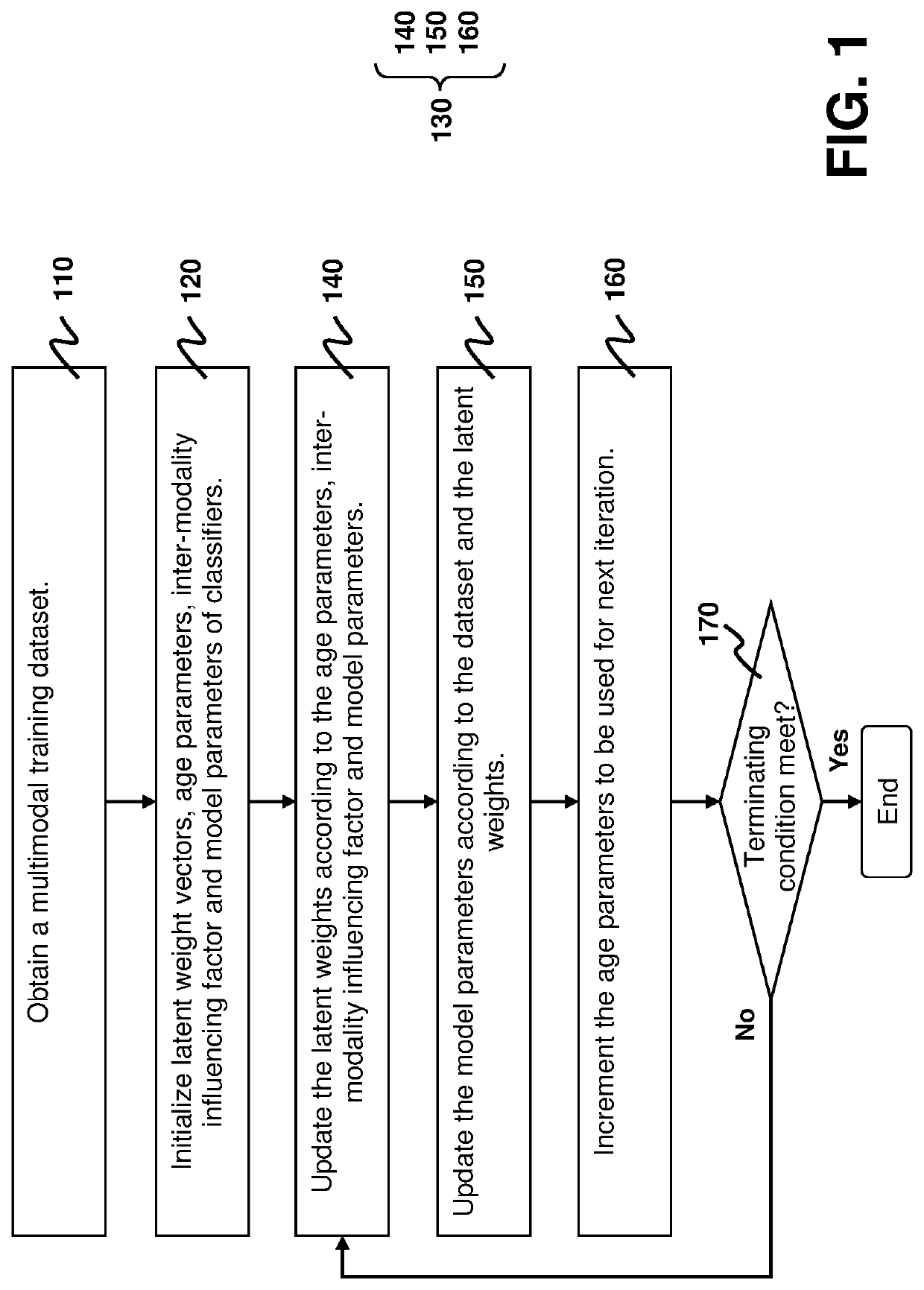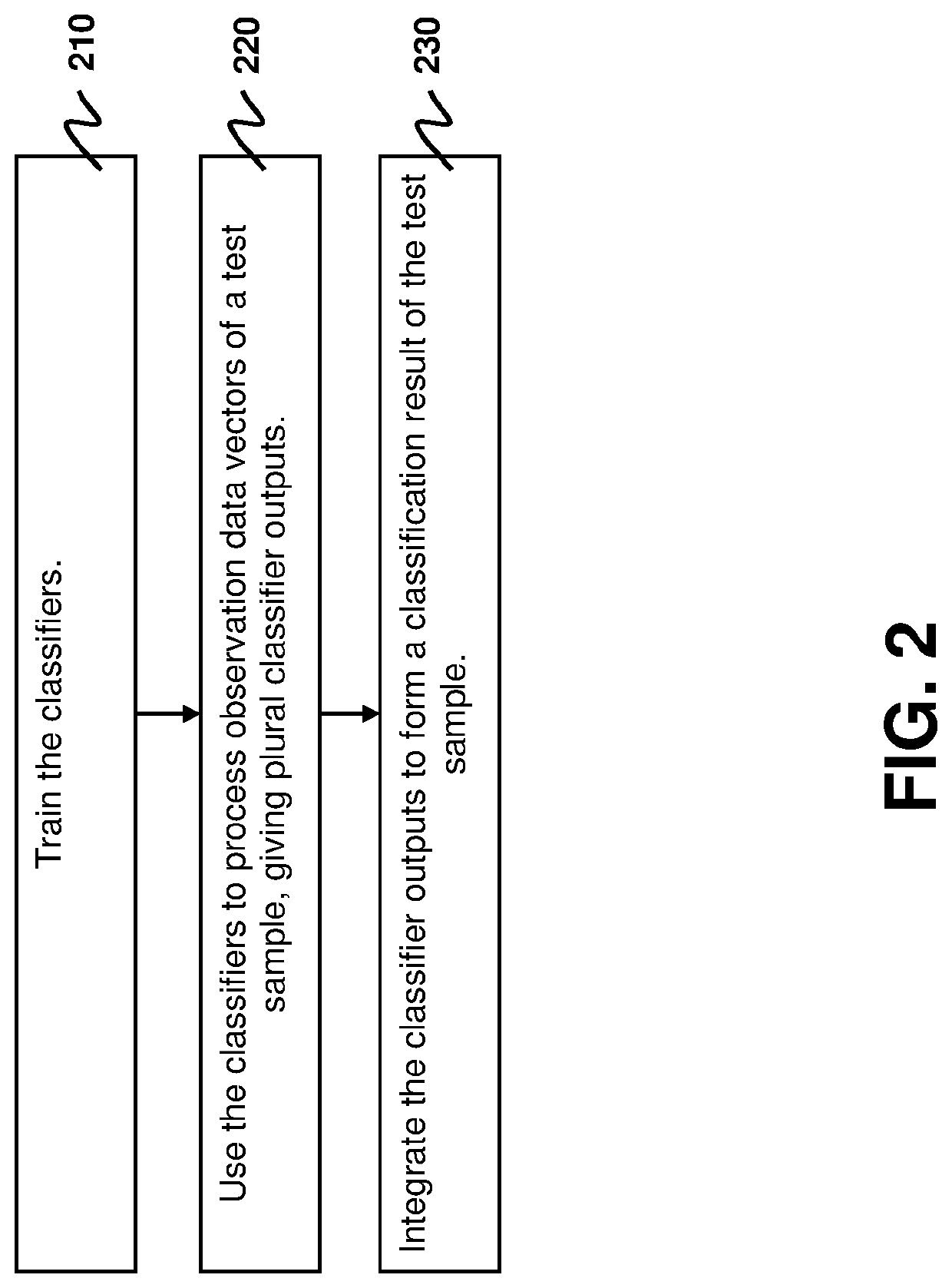Multimodal Self-Paced Learning with a Soft Weighting Scheme for Robust Classification of Multiomics Data
a multimodal, robust classification technology, applied in the field of multimodal classification of multimodal data, can solve the problems of learning predictive methods from multiomics, inability to effectively learn the inherent relationships among multiple modalities, and the applicability of these methods is still limited to the analysis of single-omics data
- Summary
- Abstract
- Description
- Claims
- Application Information
AI Technical Summary
Benefits of technology
Problems solved by technology
Method used
Image
Examples
Embodiment Construction
[0023]To more robustly integrating multiomics data in the presence of random noise and bias in training samples, the present disclosure provides a robust multimodal learning technique for multiomics data integration, termed multimodal self-paced learning with a soft weighting scheme (SMSPL). The SMSPL technique is aimed at simultaneously identifying potentially important multiomics signatures and predicting subtypes of cancers during the multiomics data integration process. The main idea of the SMSPL technique is to interactively recommend high-confidence samples among multiple modalities and embeds curriculum design to learn a model for each modality by gradually increasing samples from easy to complex ones during training. Particularly, it adopts a new soft weighting scheme to assign real-valued weights to training samples, thereby more faithfully reflecting latent importance of training samples in learning. The SMSPL technique iterates between calculating the sample weights from ...
PUM
 Login to View More
Login to View More Abstract
Description
Claims
Application Information
 Login to View More
Login to View More - R&D
- Intellectual Property
- Life Sciences
- Materials
- Tech Scout
- Unparalleled Data Quality
- Higher Quality Content
- 60% Fewer Hallucinations
Browse by: Latest US Patents, China's latest patents, Technical Efficacy Thesaurus, Application Domain, Technology Topic, Popular Technical Reports.
© 2025 PatSnap. All rights reserved.Legal|Privacy policy|Modern Slavery Act Transparency Statement|Sitemap|About US| Contact US: help@patsnap.com


